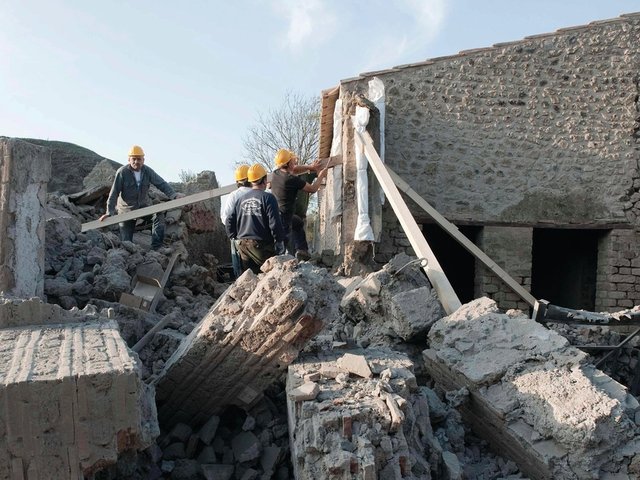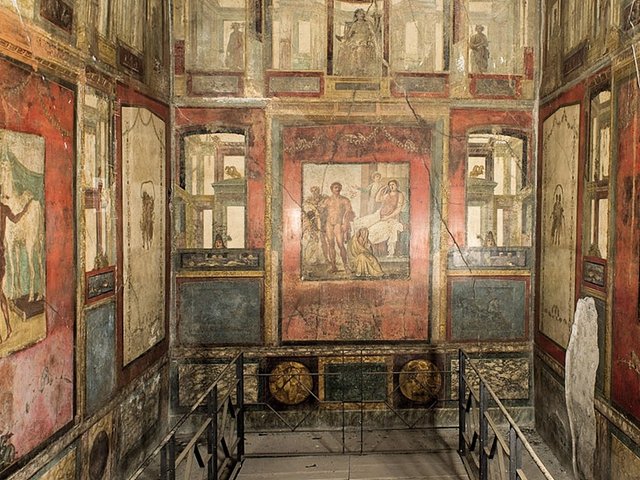The Great Pompeii Project has won a last-minute reprieve. The €105m campaign to preserve the vast archaeological site was launched by the European Commission in March 2012, with a deadline of 31 December 2015 to complete the work. In July 2014, Johannes Hahn, then the European commissioner for regional policy, warned that Pompeii risked losing Europe’s €78m contribution if it did not spend the funds by the end of 2015. (The Italian government gave an additional €27m.) In early December, total expenditure stood at €40.5m. But European and Italian officials are now expected to grant an extension to finance ongoing works at the site throughout 2016 and 2017, according to Giovanni Nistri, the director-general of the project.
The decision endorses recommendations from Unesco, which has monitored the World Heritage site since 2010, when a series of structural collapses prompted international alarm. In its June 2015 session, the World Heritage Committee called on Italy to “seek an extension” to the Great Pompeii Project and to “assess the resources needed to sustain the future management and conservation” of Pompeii. After a monitoring mission in November 2014, the committee praised the “substantial improvements that have been achieved”, stating that the site was “no longer at risk”. In 2013, Unesco had warned that Pompeii could be added to its World Heritage in Danger List if the project failed to make “substantial progress”.
“There was total agreement between all the partners,” says Massimo Osanna, the superintendent of Pompeii, Herculaneum and Stabiae. “Even Unesco, in its report, gave a very positive evaluation of the state of the works and asked for the Great Pompeii Project to go ahead in 2016 and 2017. We were therefore able to modify the schedule to continue with the European funds, but with a precise condition—all the works must be contracted and started before 31 December.”
By early December, contracts had been put to tender for almost €160m—beyond the original budget of €105m—including €19m of additional funding from the superintendency (which manages routine maintenance at the site using its own budget).
“There are no more contracts to tender,” Nistri says. “By 31 December, we anticipate that 23 sites out of 41 will be completed. Four more sites should be finished in January.” Around €70m of contracts had been awarded by the end of 2015, according to Nistri.
Securing the 44 hectares of the ancient site is a priority. Ongoing works include installing more than 400 surveillance cameras (financed by Italy’s interior ministry to the tune of €3.8m), as well as spending €6m to improve the fencing and €3m on lighting.
Target to secure all areas soon The project is gradually working through Pompeii’s nine “regiones”—areas into which the 19th-century archaeologist Giuseppe Fiorelli divided the town. “In 2000, 30% of the total area was secured… we were stuck at that figure—now we aim to reach 100%,” Osanna says. “Regiones VI and VIII will be completed by the end of 2015, VII within the first half of 2016. Three-quarters of Pompeii will then be secured. The plan will be complete with the final quarter, Regiones I, II and III, where the amphitheatre is, which is in a better state than the rest.” He says it will be “the big building site of 2016 and part of 2017”.
Osanna has drawn criticism for prioritising this ambitious plan at the expense of day-to-day maintenance. He says there was little option. “The state of the ruins was critical, and not because of individual collapses. Entire regiones were long abandoned and closed to the public,” the superintendent says.
The long-term aim, he adds, is to “minimise the risk of collapses and other incidents”. A key aspect here is the development of a strategy to anticipate future interventions. “We will soon have a highly detailed map to read the ruins on a 1:50 scale,” Osanna says. “The detail is extraordinary—ten times better than the previous one, which dates to 2000.”
Working around the clock
In the meantime, engineers and conservators are working around the clock to restore and reopen 15 important Roman houses. The Casa della Fontana Piccola (House of the Little Fountain) reopened in November. By the end of December, four houses—the Casa di Paquio Proculo, Casa del Frutteto (house of the orchard), Casa della Fullonica di Stephanus (house of the fullery of Stephanus; an ancient laundry) and Casa del Sacerdos Amandus—were due to reopen, followed by the Casa di Marco Lucrezio this month. Osanna says that work will finally resume at the Casa dei Vettii, one of the largest and most richly decorated in Pompeii, in 2016, after a decade-long delay.
For Osanna, progress can also be measured in terms of people. He and Nistri have brought in more than 30 new staff, including architects, archaeologists and conservators. “Beyond the numbers and figures, there is finally action at Pompeii—with an energy I don’t believe there has ever been before,” he says.



